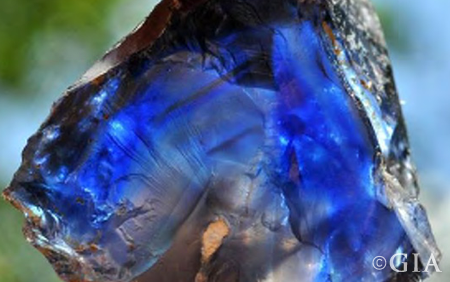September Birthstone: The Sapphire
September’s birthstone, sapphire, is unique among gemstones. It is a very hard gemstone, second only to diamond. Sapphire is a variety of the mineral corundum. While other stones are known for their singular hues, sapphires come in a variety of colors.
 The most preferred color is blue, which ranges from very light to very dark violetish blue to greenish blue. Other colors for sapphires are pink, purple, yellow, orange, pink-orange, green, black and colorless. Color-change sapphires alternate from violetish blue in daylight to deep reddish purple in incandescent light. The red variety of corundum has gone by another name since antiquity– ruby. Sapphires are generally found in Sri Lanka, Burma (Myanmar), Thailand, Cambodia, Madagascar, Tanzania, Australia, and the United States (Montana).
The most preferred color is blue, which ranges from very light to very dark violetish blue to greenish blue. Other colors for sapphires are pink, purple, yellow, orange, pink-orange, green, black and colorless. Color-change sapphires alternate from violetish blue in daylight to deep reddish purple in incandescent light. The red variety of corundum has gone by another name since antiquity– ruby. Sapphires are generally found in Sri Lanka, Burma (Myanmar), Thailand, Cambodia, Madagascar, Tanzania, Australia, and the United States (Montana).
Sapphire has a long and rich history. Museums, auction houses, and gemology publications have documented that as far back as 800 BC, sapphires were believed to reflect heaven and ward against evil. An abbess during the Renaissance era, Mother Hildegard, wrote in her book “Physica” that sapphires have the capacity to strengthen intellect and provide healing properties. More recently, sapphires have graced royalty, like the engagement ring that Prince Charles gave to Lady Diana, and continue to be seen today on fashion models and celebrities.
Birthstone lists have been around for centuries. In 1912, the National Association of Jewellers chose sapphire for the month of September. Sapphires sometimes have inclusions that create a star effect called asterism. These tiny slender fibers cause light to reflect in a star-shaped pattern. The stars can have four, six, or even twelve rays extending from a single point. Suitably, these are called “star-sapphires.”
It is a standard practice in the gem industry for sapphires to be heat-treated. This process leads to intensified color and can remove inclusions. Some sapphires are diffusion treated which artificially intensifies the gem’s color. Sapphires should only be purchased from a trustworthy jeweler and any treatments should be fully disclosed to the buyer. Any significant purchase of a sapphire should be accompanied by a GIA Colored Stone Identification Report which will confirm that your stone is, in fact, a sapphire, identify any known treatments, and even indicate its geographic origin.


